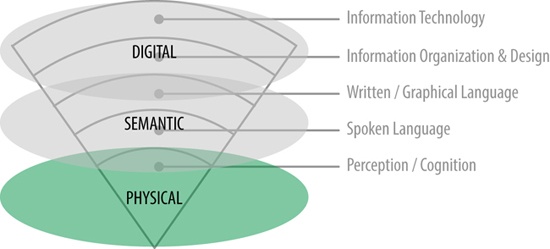Part II. Physical Information
The Roots of Context
THE PRODUCTS AND SERVICES WE DESIGN ARE PART OF A GREATER ENVIRONMENT, but they have the capacity to change that environment as well as the behaviors of people who use them. Smartphones influence user behavior in a different way than older cell phones, which in turn changed behavior from when only phone booths and land lines were available. Obviously, right? But, did you know that the separation between the environment, the object, and the user is mostly artificial and that theyâre all part of one dynamic system? Have you also noticed that when we use software, our perception seems to expect that environment to behave according to the same laws we rely on in the physical world?
The mechanics of physical life shape the way we understand abstractions such as language, social systems, and software. Thatâs why weâre going to spend some significant quality time together looking at what Iâm calling Physical Information, the mode at the bottom of the diagram shown in Figure II-1.

Part II introduces some essential theories about perception and action. It explores what affordance really is, with special attention to how it was originally conceived by its creator, James J. Gibson. It also covers how the environment influences behavior, how memory and learning work, and offers models for breaking down ...
Get Understanding Context now with the O’Reilly learning platform.
O’Reilly members experience books, live events, courses curated by job role, and more from O’Reilly and nearly 200 top publishers.

